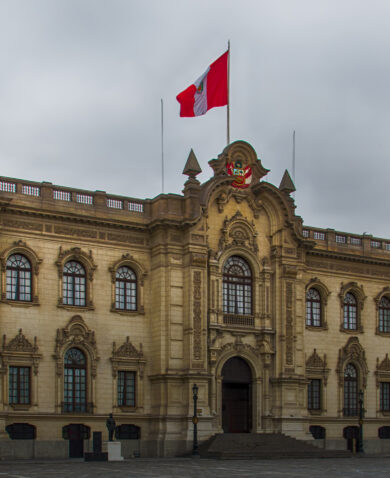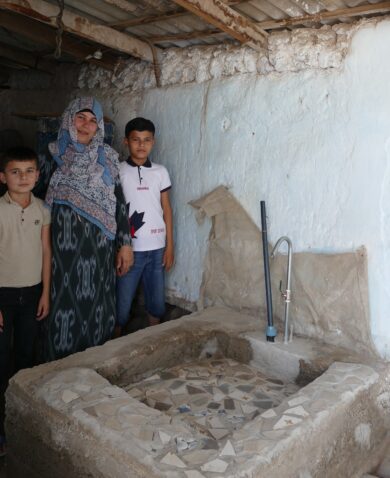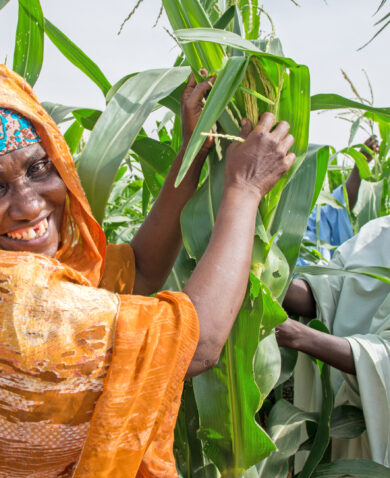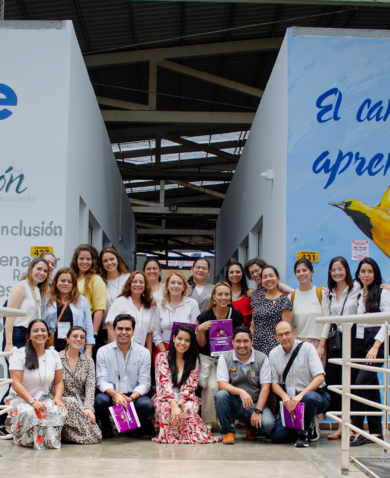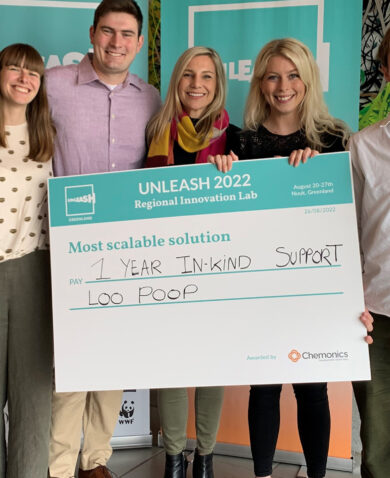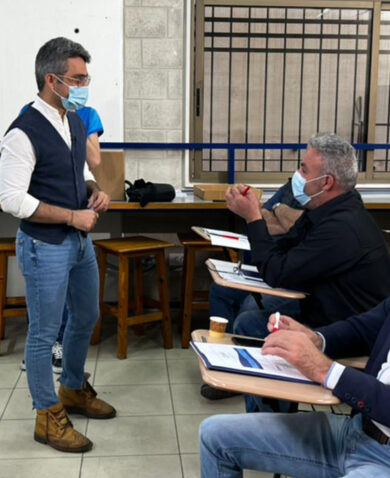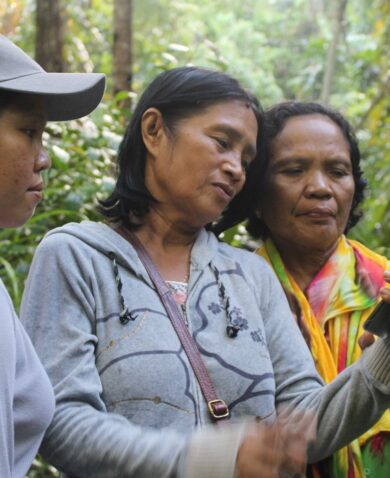
Moving Past the Discussion Table: 3 Methods for Operationalizing Private Sector Partnerships
July 28, 2020 | 5 Minute ReadYou have the private sector partner at the table, but what happens next? Frenki Kozeli, Julian Guelig, and Dany Khy share three approaches to forming private sector engagement partnerships that can be replicated and tailored across development contexts.

Recently, Chemonics partnered with the University of Notre Dame (one of the partners in the creation of USAID’s Private Sector Engagement Evidence Gap Map) to conduct an in-depth survey of our development programs. The goal was to better understand how our projects are working with the private sector to achieve development impact — and, more importantly, what challenges or hurdles they see in the partnership development cycle. Understanding any pain points is particularly crucial now, given that private sector and development objectives have never been more aligned in the wake of COVID-19. The development and private sector actors are both eager to maintain a healthy workforce, secure economic stability and resilience, counter disinformation, and establish stable supply chains — and are better positioned to accomplish these goals in partnership.
Based on the conversations in the development community to date, we expected our program teams to report that “speaking the same language” or “bringing partners to the table” as their biggest challenges. This wasn’t the case. Overwhelmingly, the pain point identified by our projects was partnership formulation. You have the private sector partner at the table, but what happens next? A handshake? A memorandum of understanding (MOU)? A contract? This was our wake-up call to invest more in talking about the operational side of private sector engagement. Chemonics realized that we — and the development community — need to invest in creating, adapting, and sharing evidence-driven tools for private sector engagement that directly address pain points in the partnership development process.
Making It Work
In true context-driven development, the answer to “what happens next?” is actually “it depends.” It depends on what the private sector partner is already doing and what they’re comfortable signing or committing to with a project. To get the conversation started, we’re sharing three private sector engagement partnership formulation processes that can be replicated and tailored to new contexts.
Model 1: Adding Value to Common Interests – Supporting Private Sector Investment in Community Violence Prevention
For USAID’s Juntos para la Prevención de la Violencia (JPV – Together for Violence Prevention) project in Mexico, Chemonics works alongside local actors to facilitate the replication of successful crime prevention models and best practices. With partnership at its core, JPV used the Local Systems Framework and conducted a survey to gauge the private sector’s long-term economic losses attributable to violence and crime and identify private sector partners already working in crime prevention, such as BBVA bank. Plagued by crime and violence, communities in the border city of Tijuana experienced physical and social infrastructure deterioration leading to significant defaults on mortgages and foreclosures in residences, which in turn sharply depreciated property values. To reverse this vicious cycle, BBVA partnered with the government, businesses, and civil society organizations (CSOs) to rebuild and reinvest in the communities and stabilize home property values and mortgages. This initiative, called Mejora Mutualista, significantly reduced the losses that the bank had incurred when applying its traditional collection methods and helped neighborhood organizations build communities that work towards peace and security.
Our project team recognized that JPV and Mejora Mutualista shared some key objectives, and it approached BBVA with a value proposition proposal, backed with data on how a partnership would improve BBVA’s social impact. The business-savvy JPV team kicked off partnership negotiations at a two-day workshop with one question at the forefront: “How can we help you?” After nine months of meetings and building trust, the project partnership was formalized in a letter of intent. To improve BBVA’s approach, JPV has helped to train BBVA’s staff to identify and work with at-risk youth, prevent crime through environmental design, and apply best practices for social impact projects as well as supports BBVA’s investment in CSOs. To date, JPV has helped Mejora Mutualista reach 10,205 beneficiaries. Since Mejora Mutualista is owned and managed by the private sector partner, sustainability is inherent to BBVA’s business model and will continue long after JPV support ends.
Model 2: Grants & Co-Financing to De-risk Investment – Collaborative Tourism Campaigns in Jordan
After 15 years of working in the tourism sector in Jordan, Chemonics has seen the benefits of long-term investment in private sector relationships. In its fifth iteration, USAID’s $41 million Building Economic Sustainability through Tourism (BEST) project has private sector partnerships in its DNA: After demonstrating the value and need to leverage private sector funding in previous iterations, USAID built an incentive fee into the contract to formalize targets for the amount of private sector funding leveraged.
One example of how the project has used dynamic partnerships to unify and strengthen the diversity of tourism actors is a collaborative marketing campaign for Jordanian tour operators. Through requests for applications, the project and the Jordan Tourism Board co-financed cooperative marketing campaigns that invited local hotels, airlines, small businesses, and other local service providers to collaborate on a complete local package that catered to international demand and secured buy-in from each contributor. With each stakeholder contributing a financial amount to the campaign, the project provided additional funding through grants to the Jordanian tour operators that managed the campaign in order to de-risk the entire investment. By focusing on the overlap of each stakeholders’ different interests, the project aligned incentives to unify the complex tourism ecosystem and guarantee the longevity of these relationships.
Model 3: Partnership Brokerage to Ensure Sustainability – Linking the Private Sector with the Government in Response to COVID-19 in the Philippines
Governments around the world are acting fast to address the economic crisis sparked by the COVID-19 pandemic. In the Philippines, the Department of Social Welfare and Development has created a cash subsidy program for families in need. The distribution of this much-needed cash, however, has encountered several challenges including the lack of beneficiary data and the largely manual nature of the initial cash distribution process, which was further hindered due to physical distancing protocol. These challenges have made efficient and equitable distribution very difficult, often leading to delayed provisions of vital relief to low-income households.
With sustainability and inclusivity at the forefront, USAID’s E-PESO activity, implemented by Chemonics, convened government partners, local nonprofit Developers Connect Philippines (DEVCON), and two private sector telecom operators to develop the ReliefAgad (“quick relief) app to address the challenges experienced with beneficiary registration and cash assistance distribution. E-PESO facilitated the partnerships between the government and private sector partners to allow people with lower incomes to use the application free of data charge, provide high-quality assurance testing, advise on data deduplication and digital payments, and assist in the training, communications, and publicity of ReliefAgad. Through an MOU with the government entities, E-PESO fortified the government’s ownership of the app and its partnerships with local stakeholders. The sustainability is further supported by the Department of Social Welfare and Development’s plans to use the system and partnerships for other social subsidy programs, such as social pensions.
What Can We Take Away from These Examples?
The tools and methods above — letters of intent, co-financing agreements, or pure facilitation — are familiar to most development practitioners. So, in sharing these stories, we aim to demystify the private sector partnership formulation process, demonstrating that the development community can adapt the tools we already know to engage the private sector, especially when we need an urgent response to crises such as COVID-19. In the Philippines case, we see how COVID-19 opened the door for private sector engagement. The private sector was best positioned to help the government deepen its social impact and ensure an inclusive rollout of the economic relief program. The private sector is at the table, and with meaningful dialogue and a bit of flexibility, development practitioners can engage with them for the long haul.
What’s Next?
Beyond partnership formulation, many other questions about private sector engagement arise during implementation. Who is the right person to handle private sector engagement on your project? How do partnerships evolve over time? How do you recalibrate if they fail? How do you ensure the sustainability of the private sector partnership initiative post-project? This post will be the first in a series in which we tackle some of these questions. And Chemonics will continue to learn from our peers as well, considering how we can pool our experiences, knowledge, and tools during this critical time. Some of our favorite resources include:
- USAID’s External Orientation Document on Private Sector Engagement for COVID-19 Response
- Business Fights Poverty & UKAID’s Business & COVID-19: Respond, Recover, Rebuild Better Resource Page
- U.S. Chamber of Commerce Foundation – Corporate Aid Tracker: COVID-19 Business in Action
Posts on the blog represent the views of the authors and do not necessarily represent the views of Chemonics.







